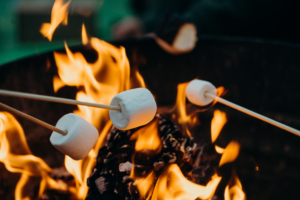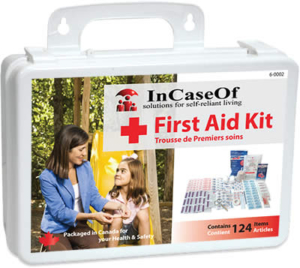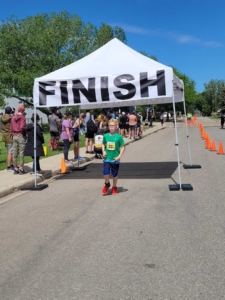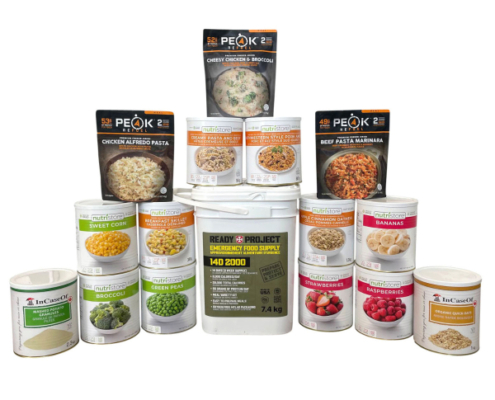Mastering Preparedness: A 30-Day Prep Bootcamp!
Are you ready for any emergency or disaster that might come your way? Whether it’s a natural disaster, power outage, or unforeseen crisis, being prepared is helpful. Welcome to “Mastering Preparedness: A 30-Day Home Prepper Bootcamp,” a challenge to transform your home into a fortress of self-sufficiency and resilience.
The path to preparedness might seem daunting, but we’ve designed this bootcamp to be accessible and engaging. Each day’s activity is carefully crafted to ensure you make measurable progress while learning new skills and reinforcing old ones. Whether you’re a seasoned prepper or new to the concept, this bootcamp is your opportunity to fine-tune your preparedness efforts and elevate your level of readiness.
Are you up for the challenge? Let’s begin!
Have a notebook and/or a binder with loose-leaf to make notes and track progress, plus please feel free to peruse the Academy for related articles from day to day!
Week 1: Food and Water
Day 1: Take an inventory of your current food and water supplies. Make a list of what you have and their expiration dates.
Day 2: Research and create a basic emergency food supply plan. Calculate the amount of food your household needs for one week and make a shopping list.
Day 3: Go grocery shopping for your emergency food supply. Focus on non-perishable items like canned goods, freeze dried or dehydrated foods, and grains. We have you covered here!
Day 4: Purchase a water purification system or additional water storage containers. Ensure you have at least 2-4 liters of water per person per day for a week.
Day 5: Create a water purification plan. Learn how to use water purification tablets or filters effectively.
Day 6: Research and prepare a list of recipes that can be made from your emergency food supply. Include cooking instructions.
Day 7: Organize your food and water supplies in a dedicated storage area, keeping the oldest items up front for easy rotation.
Week 2: Shelter and Warmth
Day 8: Assess your home for potential shelter and heating needs during an emergency. Identify weak points and drafty areas.
Day 9: Make a list of necessary shelter and warmth supplies such as blankets, sleeping bags, or a portable heater.
Day 10: Purchase or gather the shelter and warmth supplies you identified, if lacking.
Day 11: Create an emergency heating plan, including safe use of any heating devices.
Day 12: Practice setting up a temporary shelter or insulation in your home, such as a tent or tarp.
Day 13: Learn how to start a fire safely, both indoors (if you have a fireplace) and outdoors.
Day 14: Review your emergency heating and shelter plans with your household members.

Week 3: First Aid and Health
Day 15: Check your first aid kit for expiration dates and restock any missing items.
Day 16: Sign up for a basic first aid and CPR course or review your existing skills.
Day 17: Create a list of essential medications for your family and check their expiration dates.
Day 18: Refill any necessary prescriptions and purchase over-the-counter medications for common ailments.
Day 19: Learn basic home remedies and herbal remedies for common health issues.
Day 20: Organize your medical supplies and first aid kit in a clearly marked and accessible container.

Day 21: Teach your household members basic first aid skills and ensure they know where the first aid supplies are located.
Week 4: Communication and Security
Day 22: Establish a communication plan with family or household members during an emergency. Ensure everyone has a list of emergency contacts, or access to them.
Day 23: Invest in a battery-operated or hand-crank emergency radio for staying informed during power outages.
Day 24: Create a list of important documents and gather them in a waterproof container.
Day 25: Practice safe firearm storage and handling if you have them. Make sure appropriate licenses or permits are in place.
Day 26: Set up a neighborhood watch or community emergency response group. Alternatively, have a conversation with neighbors about an emergency response plan.
Day 27: Develop a security plan for your home and review it with your household members.
Day 28: Revisit your overall preparedness plan and make any necessary adjustments.
Day 29: Conduct a emergency drill to test your preparedness efforts.
Day 30: Reflect on your progress over the past 30 days and create a long-term preparedness plan to continue improving your readiness.

CONGRATULATIONS! You did it! Feel free to reach out to BridenAcademy@bridensolutions.ca and tell us all about your experience going through the challenge. We would love to hear how it went!











